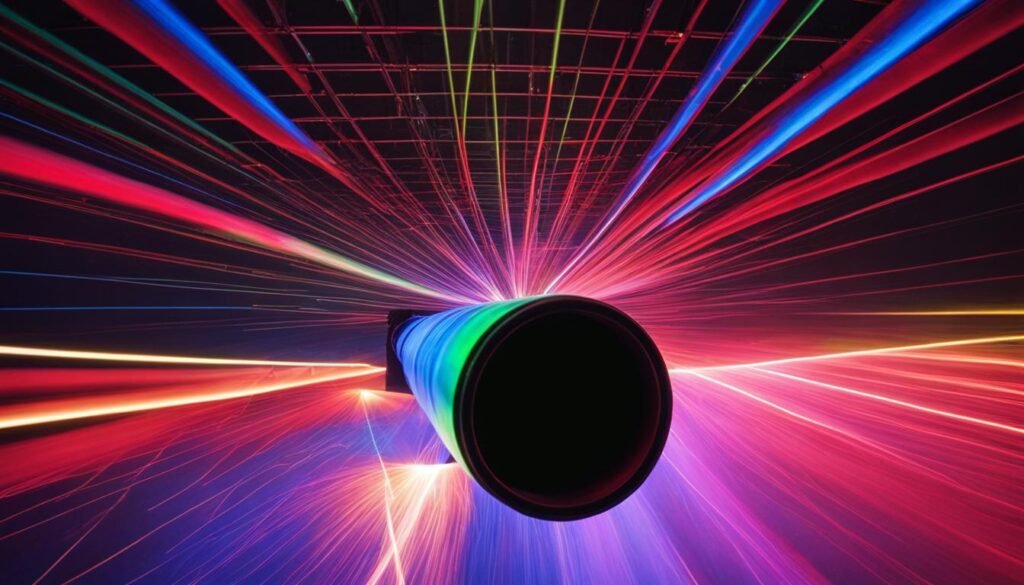Contents

Source: Fosco Connect
<>
Understanding Stimulated Raman Scattering
Introduction to Stimulated Raman Scattering
Stimulated Raman scattering is a nonlinear interaction that involves a delayed nonlinear response of a material with a certain nonlinearity. This phenomenon occurs when a signal photon interacts with a pump photon of a specific wavelength within a Raman gain medium. The pump photon can be converted into another signal photon, releasing a phonon into the medium with energy equal to the difference in photon energies. This process is utilized in Raman amplifiers and Raman lasers to amplify optical signals.
Types of Raman-Active Optical Media
Raman-active optical media can come in various forms:
- Raman crystals
- Optical glasses
- Gases or liquids
Properties of Raman Gain Media
Key properties of Raman gain media include the Raman gain coefficient, nonlinear index, and Raman response function. These properties determine the amplification of optical signals in Raman systems.
Raman Crystals and Glasses
Raman crystals like barium nitrate and tungstate materials are commonly used as Raman gain media. These crystals offer specific Raman gain spectra and thermal properties suitable for amplification applications. Optical glasses, especially those used in optical fibers, can also serve as effective Raman gain media.
Gases and Liquids as Raman Gain Media
Molecular gases such as hydrogen and methane, as well as liquids like carbon disulfide and benzene, can be utilized as Raman gain media. While gases provide smaller Raman gain due to their low density, liquids offer higher Raman gain and can be used in larger volumes.
Conclusion
Stimulated Raman scattering is a powerful tool for amplifying optical signals in various applications. Understanding the different types of Raman-active media and their properties is crucial for designing efficient Raman systems.

Source: Phys.org
Feel free to comment your thoughts.



